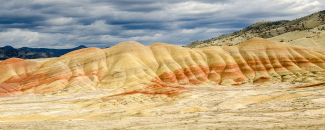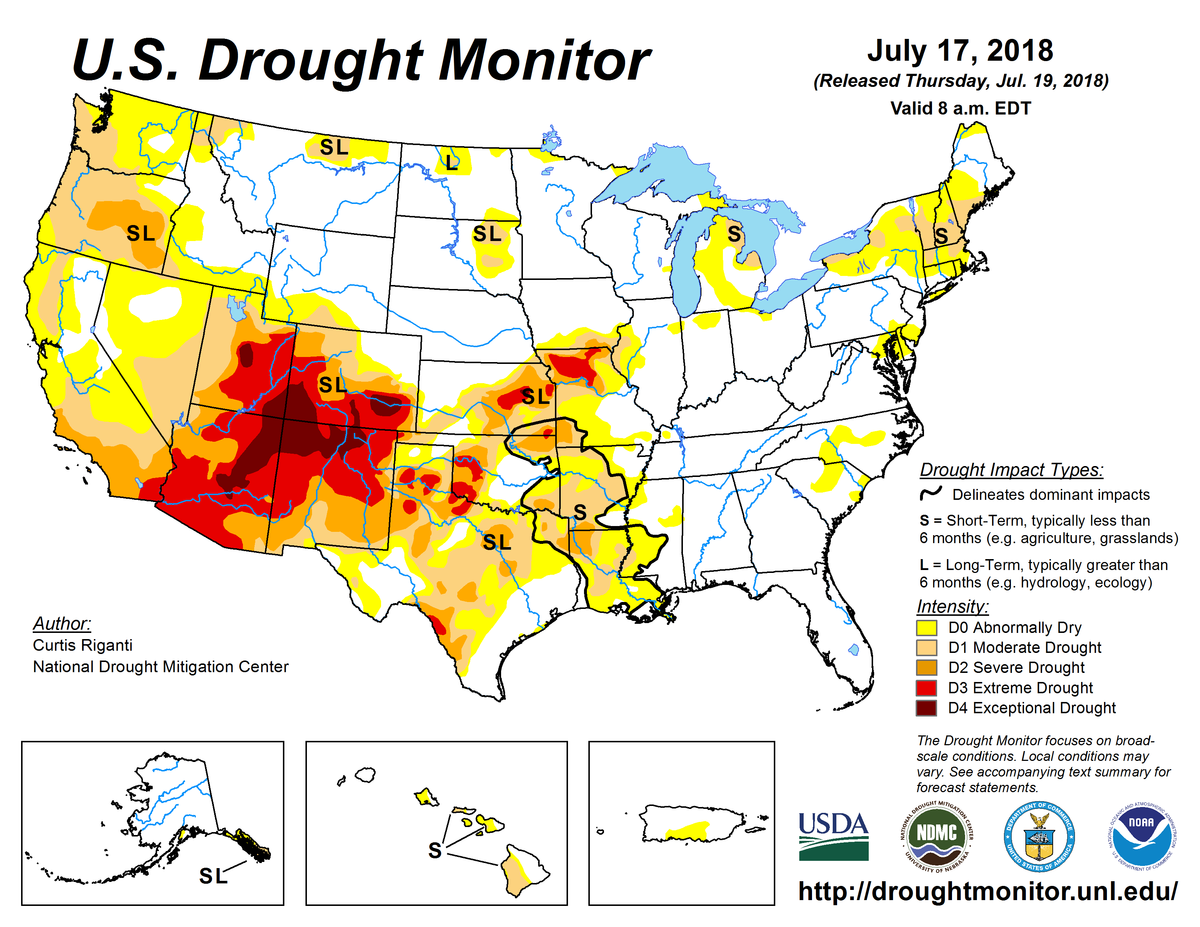
According to the July 17, 2018, U.S. Drought Monitor, moderate to exceptional drought covers 26.3% of the United States, an increase from last week’s 25.4%. However, extreme and exceptional drought—the worst categories—contracted slightly to cover 7.2% of the nation, down from 7.4% last week.
Like last week, a high pressure ridge dominated the circulation pattern across the contiguous United States during this U.S. Drought Monitor week, keeping the main storm track to the north. Upper-level lows moved along the Canadian border in the jet stream flow at the northern edge of the high pressure ridge. They dragged surface lows and fronts across the northern states, with some fronts penetrating into the Southeast.
The fronts brought above-normal precipitation to parts of the central Plains to Upper Midwest and a few areas in the Northeast, while above-normal monsoon rains fell in the Southwest and above-normal convective precipitation spotted the South. Otherwise, precipitation was below-normal, especially across the Pacific Northwest to northern Plains, southern Plains, and Ohio Valley to East Coast. Temperatures were below-normal in parts of the Southwest beneath the monsoon clouds and rain, and across parts of the East, but warmer-than-normal temperatures dominated most of the Lower 48 beneath the high pressure ridge.
As a result, drought and abnormal dryness contracted in parts of the Southwest and southern Plains where convective rains fell, but expanded in parts of the Northwest, Northeast, eastern Great Lakes, and Plains to Mid-Mississippi Valley.
Abnormal dryness and drought are currently affecting nearly 133 million people across the United States—about 42.7% of the country’s population.

The full U.S. Drought Monitor weekly update is available from Drought.gov.
In addition to Drought.gov, you can find further information on the current drought as well as on this week’s Drought Monitor update at the National Drought Mitigation Center. See their recent news releases.
The most recent U.S. Drought Outlook is available from NOAA’s Climate Prediction Center and the U.S. Department of Agriculture provides information about the drought’s influence on crops and livestock.
For additional drought information, follow #DroughtMonitor on Facebook and Twitter.



